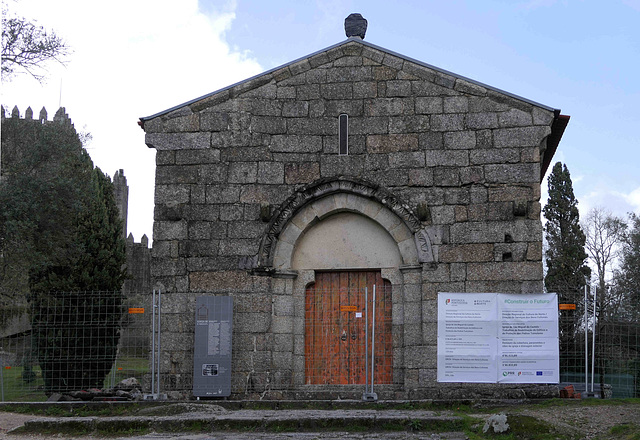Location
Lat, Lng: 41.447431, -8.290998
You can copy the above to your favourite mapping app.
Address: Igreja de São Miguel do Castelo
You can copy the above to your favourite mapping app.
Address: Igreja de São Miguel do Castelo
See also...
Keywords
Authorizations, license
-
Visible by: Everyone -
All rights reserved
-
91 visits
Guimarães - Igreja de São Miguel do Castelo


Guimarães was settled in the 9th century, at which time it was called Vimaranes. This name might have had its origin in the warrior Vímara Peres, who chose this area as the main government seat for the County of Portugal which he conquered for the Kingdom of Galicia. Guimarães has a significant historical importance due to the role it played in the foundation of Portugal. The city is commonly referred to as "the cradle city" because it was in Guimarães that Portugal's first King, Afonso Henriques was born, and also due to the fact that the Battle of São Mamede – which is considered the seminal event for the foundation of the Kingdom of Portugal – was fought in the vicinity of the city.
Legend suggests that it was the sight of the baptism of the young Afonso Henriques. These claims are contradictory, since the date of the church's founding has been suggested to be during the reign of Afonso II of Portugal.
It was constructed within the circle of the Castle of Guimarães, with which it intimately shares a relationship. A few authors date its probable construction to the 9th or 10th century, during the era of Countess Mumadona Dias. This current of nationalist histography, dates to the 19th century and continues to this day.
This interpretation contradicts that date of its consecration and first reference by the church. The church was first referenced in 1216. Its construction occurred even as this group of clergy were quarrelling with the powerful Archbishop of Braga, which later led to armed confrontation.
Legend suggests that it was the sight of the baptism of the young Afonso Henriques. These claims are contradictory, since the date of the church's founding has been suggested to be during the reign of Afonso II of Portugal.
It was constructed within the circle of the Castle of Guimarães, with which it intimately shares a relationship. A few authors date its probable construction to the 9th or 10th century, during the era of Countess Mumadona Dias. This current of nationalist histography, dates to the 19th century and continues to this day.
This interpretation contradicts that date of its consecration and first reference by the church. The church was first referenced in 1216. Its construction occurred even as this group of clergy were quarrelling with the powerful Archbishop of Braga, which later led to armed confrontation.
- Keyboard shortcuts:
Jump to top
RSS feed- Latest comments - Subscribe to the comment feeds of this photo
- ipernity © 2007-2025
- Help & Contact
|
Club news
|
About ipernity
|
History |
ipernity Club & Prices |
Guide of good conduct
Donate | Group guidelines | Privacy policy | Terms of use | Statutes | In memoria -
Facebook
Twitter











Sign-in to write a comment.